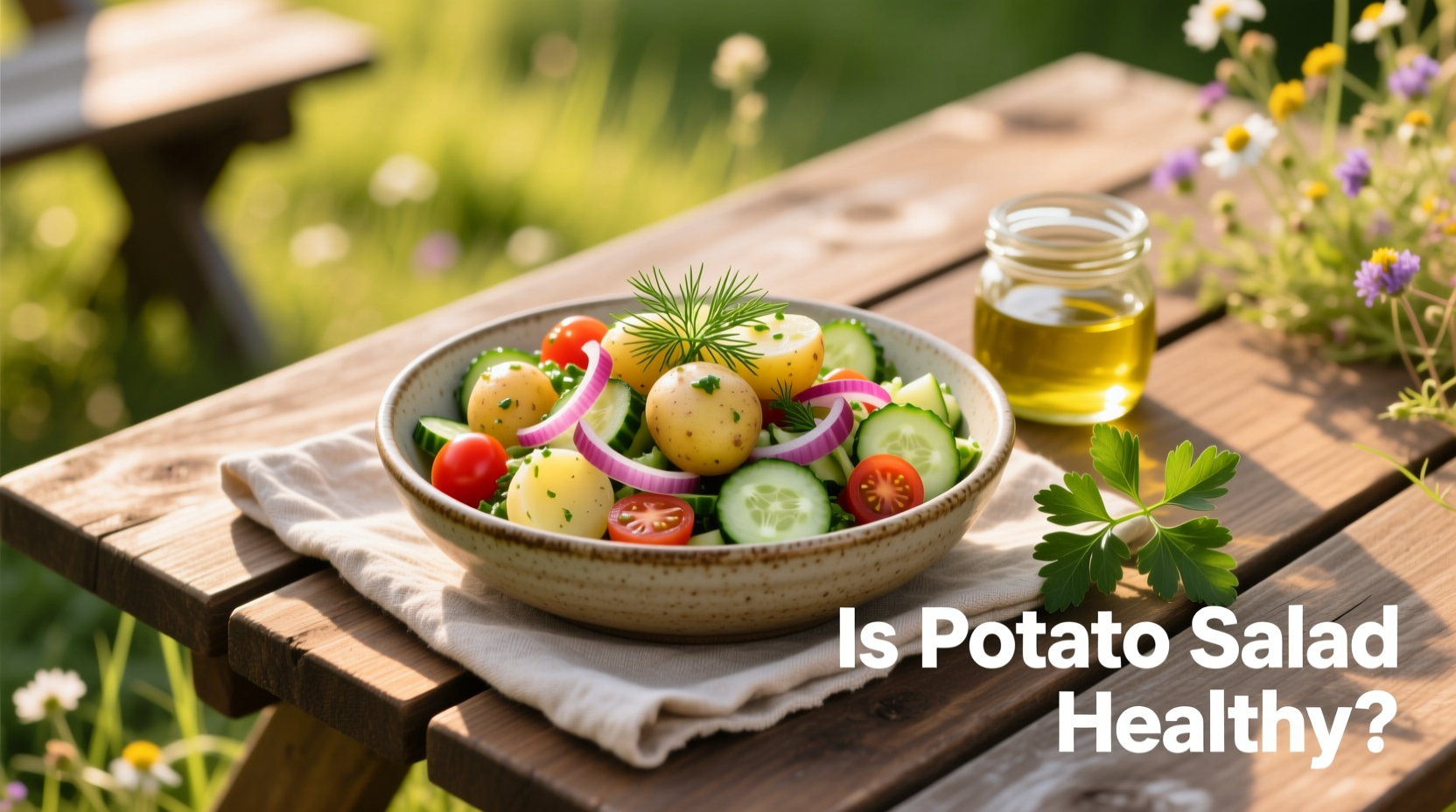Yes, potato salad can be healthy when prepared with wholesome ingredients and consumed in moderation. The healthiness depends on preparation methods: traditional versions with excessive mayo are high in unhealthy fats, while versions using Greek yogurt, added vegetables, and proper portion sizes offer valuable nutrients like potassium, vitamin C, and resistant starch.
Many people assume potato salad is inherently unhealthy due to its reputation as a picnic staple loaded with mayonnaise. As someone who's studied culinary traditions across Europe, I've seen how this dish varies dramatically in nutritional value depending on preparation techniques. Whether you're packing lunch for work or bringing a dish to a summer barbecue, understanding what makes potato salad healthy (or not) helps you make informed choices without sacrificing flavor.
The Nutritional Reality of Potato Salad
Potatoes themselves are nutrient-dense vegetables packed with potassium, vitamin C, and fiber—especially when eaten with their skins. The problem arises in how we typically prepare potato salad. Traditional American versions often drown cooled potatoes in large quantities of mayonnaise, transforming a potentially healthy dish into one high in saturated fats and calories.
According to USDA FoodData Central, a standard 1-cup serving of traditional potato salad contains approximately:
| Nutrient | Amount | % Daily Value |
|---|---|---|
| Calories | 367 | 18% |
| Total Fat | 24g | 31% |
| Saturated Fat | 3.8g | 19% |
| Carbohydrates | 33g | 12% |
| Fiber | 2.4g | 9% |
| Protein | 4.2g | 8% |
| Potassium | 490mg | 10% |
Why Potato Salad Gets a Bad Reputation
The negative perception stems from common preparation methods that prioritize taste over nutrition. Many commercial and homemade versions use:
- Excessive amounts of full-fat mayonnaise (often 1 cup per 2 pounds of potatoes)
- Added sugars in commercial mayo or sweet pickle relish
- Insufficient vegetables to balance the potato-to-dressing ratio
- Preparation methods that eliminate beneficial resistant starch
When potatoes are cooked and immediately mixed with dressing while hot, they don't develop resistant starch—the type of fiber that helps regulate blood sugar and feeds beneficial gut bacteria. Research from Harvard T.H. Chan School of Public Health shows that cooling potatoes after cooking increases their resistant starch content by up to 50%, making them more beneficial for metabolic health.

Transforming Potato Salad into a Nutrient-Rich Dish
European culinary traditions offer valuable lessons in creating balanced potato salads. In France and Germany, potato salad often features vinegar-based dressings rather than heavy mayo. Here's how to create a genuinely healthy version:
Smart Ingredient Swaps
- Replace half the mayo with plain Greek yogurt for added protein and tang
- Use Dijon mustard as a base for creaminess with fewer calories
- Add colorful vegetables like bell peppers, celery, and red onion for extra fiber
- Incorporate fresh herbs like dill or parsley for flavor without calories
- Cool potatoes completely before dressing to maximize resistant starch
Portion Perspective
The American Heart Association recommends keeping side dishes like potato salad to about ½ cup per serving. When served alongside grilled proteins and leafy greens, a modest portion of well-prepared potato salad contributes valuable nutrients without overwhelming your meal with calories.
When Potato Salad Fits Your Healthy Eating Pattern
Potato salad can be part of a balanced diet in specific contexts:
- Active days: The carbohydrates provide sustained energy for physically demanding days
- Post-workout: The combination of carbs and some protein aids recovery
- Cooler months: Hearty salads provide comforting nutrition when lighter options feel insufficient
- Special occasions: Enjoying traditional versions in controlled portions maintains dietary balance
According to the Academy of Nutrition and Dietetics, the key is viewing potato salad as a vehicle for nutrients rather than just a high-calorie side. "When prepared thoughtfully, potato salad delivers potassium levels comparable to bananas and vitamin C similar to broccoli," notes registered dietitian nutritionists in their position paper on vegetable consumption.
Creating Your Own Healthier Potato Salad
Here's a simple framework for making nutritious potato salad that satisfies both your palate and nutritional needs:
- Choose waxy potatoes like Yukon Gold or red potatoes (higher in nutrients than russets)
- Cook until just tender, then cool completely in the refrigerator (at least 2 hours)
- Prepare dressing with ¼ cup Greek yogurt, 2 tbsp olive oil, 1 tbsp apple cider vinegar, and fresh herbs
- Add at least 1 cup of chopped colorful vegetables per pound of potatoes
- Season with black pepper, garlic powder, and a pinch of sea salt
- Chill at least 1 hour before serving to allow flavors to meld
This approach reduces calories by approximately 40% while increasing fiber and micronutrients compared to traditional recipes. The result is a satisfying side dish that complements grilled fish or chicken beautifully.
Final Thoughts on Potato Salad and Health
Potato salad's healthfulness isn't binary—it exists on a spectrum determined by preparation choices. By understanding the nutritional components and making strategic modifications, you can enjoy this classic dish without compromising your health goals. The most important factor isn't whether potato salad is "healthy" in absolute terms, but how it fits within your overall dietary pattern and how you prepare it to maximize nutritional benefits while minimizing less desirable elements.











 浙公网安备
33010002000092号
浙公网安备
33010002000092号 浙B2-20120091-4
浙B2-20120091-4